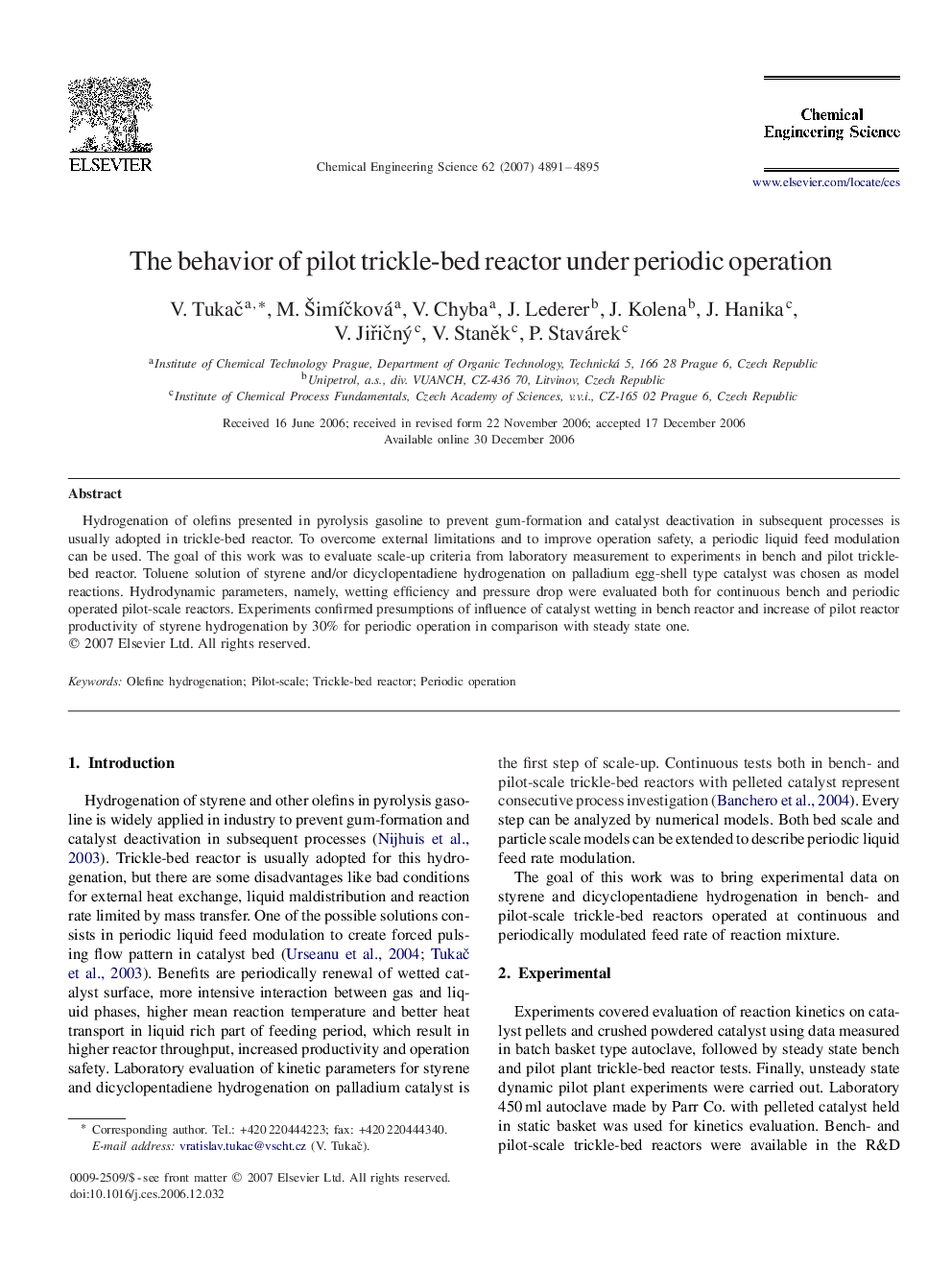| Article ID | Journal | Published Year | Pages | File Type |
|---|---|---|---|---|
| 158798 | Chemical Engineering Science | 2007 | 5 Pages |
Hydrogenation of olefins presented in pyrolysis gasoline to prevent gum-formation and catalyst deactivation in subsequent processes is usually adopted in trickle-bed reactor. To overcome external limitations and to improve operation safety, a periodic liquid feed modulation can be used. The goal of this work was to evaluate scale-up criteria from laboratory measurement to experiments in bench and pilot trickle-bed reactor. Toluene solution of styrene and/or dicyclopentadiene hydrogenation on palladium egg-shell type catalyst was chosen as model reactions. Hydrodynamic parameters, namely, wetting efficiency and pressure drop were evaluated both for continuous bench and periodic operated pilot-scale reactors. Experiments confirmed presumptions of influence of catalyst wetting in bench reactor and increase of pilot reactor productivity of styrene hydrogenation by 30% for periodic operation in comparison with steady state one.
